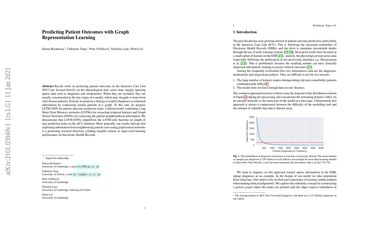Predicting Patient Outcomes with Graph Representation Learning
Recent work on predicting patient outcomes in the Intensive Care Unit (ICU) has focused heavily on the physiological time series data, largely ignoring sparse data such as diagnoses and medications. When they are included, they are usually concatenated in the late stages of a model, which may struggle to learn from rarer disease patterns. Instead, we propose a strategy to exploit diagnoses as relational information by connecting similar patients in a graph. To this end, we propose LSTM-GNN for patient outcome prediction tasks: a hybrid model combining Long Short-Term Memory networks (LSTMs) for extracting temporal features and Graph Neural Networks (GNNs) for extracting the patient neighbourhood information. We demonstrate that LSTM-GNNs outperform the LSTM-only baseline on length of stay prediction tasks on the eICU database. More generally, our results indicate that exploiting information from neighbouring patient cases using graph neural networks is a promising research direction, yielding tangible returns in supervised learning performance on Electronic Health Records.
PDF Abstract



